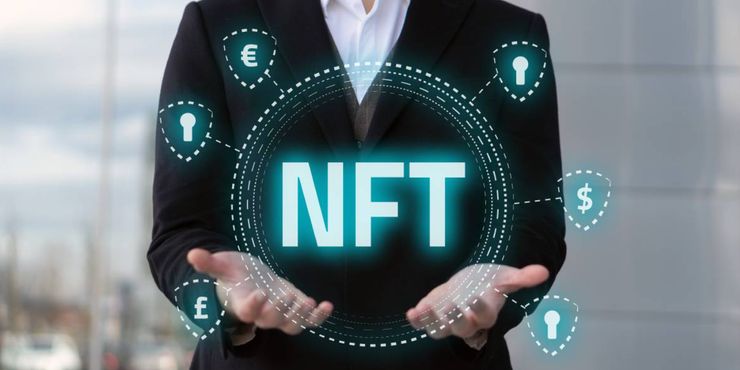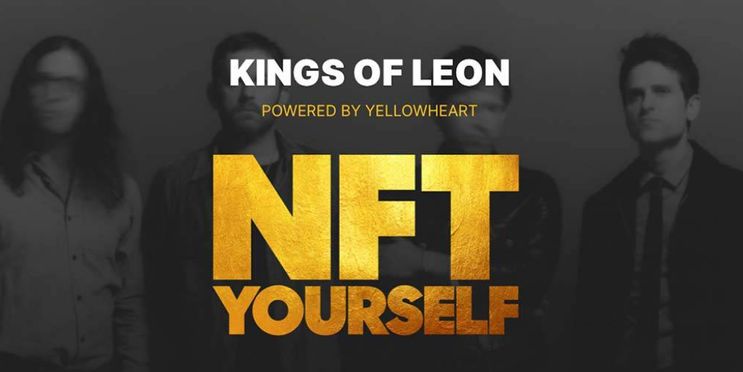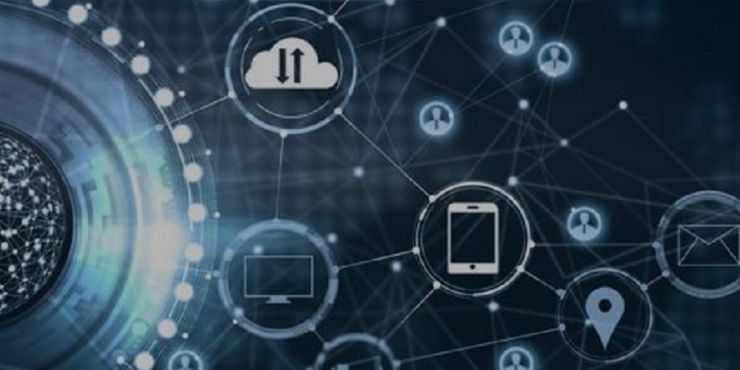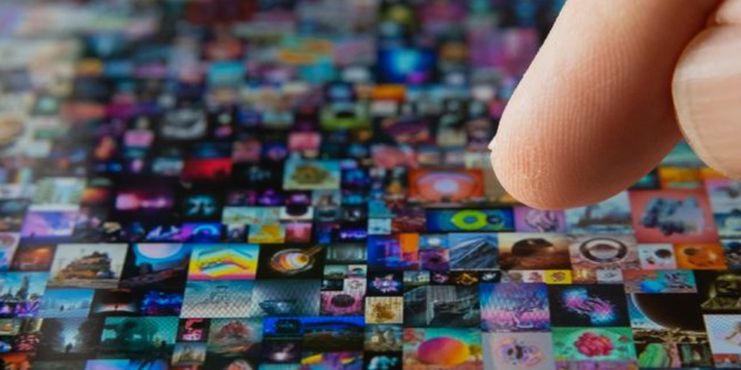Finance Needs Intelligent Vehicles -Part 5
If the automobile industry wants to truly realize the leap from the industrial age to the digital age in practice, it still needs to overcome many obstacles in reality.
Advertisement
Si Gyeongmin
Sep 09, 2021
NFTs (Non-Fungible Tokens) are essentially tradable JPEG or GIF images. When a buyer purchases a piece of NFT from the creator, he obtains its ownership, and the NFT also becomes the property of the buyer. The digital nature of NFTs makes it easy to copy and reprint, which raises questions about copyright law. Experts say that people need to understand the limitations of NFTs before buying them.
In March 2021, artist Beeple’s digital mosaic painting was auctioned at Christie’s auction house for $69 million. NFTs entered the public view for the first time. This blockchain-based encrypted asset opened a new era in the field of digital collectibles. Since then, there has been explosive growth.
On the blockchain, digital cryptocurrencies are divided into two categories: coins and tokens. The former, such as Bitcoin and Ethereum, have their own main chain and use transactions on the chain to store ledger data. The tokens are attached to the existing blockchain and use smart contracts to record the ledger, such as attached to tokens released on Ethereum.

Tokens can be divided into two types: fungible and non-fungible. Fungible Tokens, or FTs, refer to tokens that can be substituted for each other and can be split infinitely. One kind of Bitcoin can be directly exchanged with another kind of Bitcoin without any difference in essence. Non-Fungible Tokens, or NFTs, are the only and indivisible tokens because their underlying assets are unique to a certain extent and cannot be exchanged in the same way.
NFTs have been widely used in this field since they first emerged in the art world. It is worth noting that most of them are traded on exchanges such as OpenSea and Rarible as collectibles. Recently, 8888 cute "chunky penguins" have caused a sensation. Each of them has its own unique characteristics. One of them was sold for 150 Ethereum (about US$500,000), setting a new record.
However, whether it is a great digital artwork or a cute digital penguin, NFTs basically exist in the form of tradable JPEG or GIF pictures, so they are different from physical collections. Unless it is on the screen, NFTs owners cannot display these items at all. So, what do people actually get when they buy NFTs? From a legal point of view, what does the buyer really have?

1. New frontier
To understand NFTs, we must first understand the meaning of "fungible". The word "fungible" comes from the Latin verb "fungi", which means "turn round”. In a broader context, this means interchangeability, which has to do with whether something can be exchanged.
Currency has circulation value, and any 10 pound note can buy goods worth 10 pounds. NFTs are different, they cannot be exchanged for the same kind. Each one is unique, even is a limited edition.
Content sold in the form of NFTs can be created in a variety of ways. It can be generated by a computer, which is the basis for the production of 10,000 unique CryptoPunks (a pixel avatar project in Ethereum) in 2017. NFTs can be presented in the form of collaborative works, such as the British singer-songwriter’s series of music, First. They can also represent independent works, such as Beeple’s artwork; or a series of items, such as Kings of Leon’s "NFT Yourself" series (asset provided Including music albums with unique features and special concert tickets).

NFTs create opportunities for new business models that did not exist before. Artists can add clauses when trading NFTs to ensure that each time they resell their work, they can get a portion of the proceeds. This means that as long as the value of the work increases, the creator will benefit. It is true that the team also uses similar contract terms when selling players, but NFTs no longer need to track the progress of assets, and smart algorithms can automatically perform the contract at the time of sale.
New art platforms such as Niio art can display their digital works in a very simple way. When customers borrow or purchase artworks from the platform, they can ensure that there is no copyright ownership issue for the works on the screen, because NFTs and blockchain can guarantee that the ownership is true.
The emergence of NFTs gives musicians the opportunity to bring better performances and benefits to fans. As for sports memorabilia, people always think that 50% to 80% of the items are counterfeit. If they are included in NFTs and the creator's clear transaction history is fed back, this forgery problem can be overcome.

2. Limited rights
NFTs enable works or collections that were once unavailable for sale to directly reach their audience. In the past, it was impossible to sell things such as "the first tweet" and "a taco animation" on the Internet, or to directly sell a simple artwork. But now, whether it is an individual, a company, or a cultural organization, as long as they are the legal owner of the item, they can do so. In other words, digital creators can directly use NFTs to profit from their followers and sell unique digital content without intermediaries.
According to British Copyright Law, creators can do this. Because as long as the work reflects the "author's own intellectual achievements", the copyright will be automatically generated, which means that the creator of the work is the copyright owner and can perform any actions on the work according to his own will.
When a buyer purchases a piece of NFT from the creator, he obtains the ownership. In a sense, the NFT also becomes the property of the buyer. After all, NFTs are digital ownership certificates that represent the purchase of digital assets and can be tracked on the blockchain. When artists want to sell their work, they will create or "cast" NFTs, and from then on it will become a requirement for the ownership of the work. NFTs are registered on an open blockchain ledger, which enables tracking of ownership (or "source" as it is often called), previous sales price, and the number of copies that exist. The security provided by blockchain technology means that it is almost impossible to sell fake tokens.

However, the holder of NFTs does not have any other rights to the work. This includes rights under copyright law, such as the right to communicate to the public (equivalent to making the asset available to everyone), the right to adapt, and the right to copy.
In fact, the same is true for the purchase of physical collections. Owning a painting does not mean that it has the right to display it in front of the public. If someone copies the image in the painting without permission, the owner has no right to sue for copyright infringement. To obtain such rights, you need to become the copyright owner of the work, or enjoy the copyright granted to you by the creator (in written form and signed).
Due to the digital nature, online content can easily be shared, copied, and reprinted. But buyers of NFTs need to understand that if they engage in such activities without the permission of the right holder, they will infringe copyright. The only way to transfer such rights is to attach license terms when trading NFTs.
In some NFTs, the buyer is given the right to use the copyright in a limited way. Some creators of NFTs specifically restrict all commercial uses of their works.
Therefore, buyers need to clearly realize that the main reason for buying NFTs is a speculative investment and the pleasure of obtaining unique items from famous artists, brands, sports teams, etc. Unless permitted by other terms, buyers cannot enjoy the right to share creative works or copy works on public platforms for others to use.
In addition, buyers should also be vigilant. It is impossible for the blockchain to fully understand whether a creative work is true or not. Some people may create NFTs using other people's works and infringe the rights of copyright owners. Therefore, the purchaser needs to confirm whether the purchased NFTs are really made by the creator of the work.

Experts believe that in the future, the application of NFTs may surpass the art world. Outside of the art world, NFTs have greater potential because they completely change the rules of ownership. The transaction of ownership transfer usually relies on the intermediary layers to establish transaction trust, exchange contracts, and ensure that funds change hands. However, since the information cannot be changed and the transactions recorded on the blockchain are reliable, these dependent factors will become less necessary in the future. Smart contracts can replace lawyers and escrow accounts, automatically ensuring the transfer of funds and assets, and the parties' compliance with the agreement. NFTs convert assets into tokens so that they can circulate freely in this system.
This has the potential to completely change markets such as real estate and automobiles. NFTs can also be part of the solution to land ownership issues. Only 30% of the world’s population has legally registered their land and property, and those who have not clearly confirmed their rights will find it difficult to obtain financing and credit. In addition, in the future, if we have more time to spend in the virtual world, then things purchased there may also be treated as NFTs.
In short, NFTs may continue to exist and will obviously raise more ownership issues related to copyright law. Before buying NFTs, it is important to know "what you actually get and have" from a legal point of view.
Advertisement
Finance Needs Intelligent Vehicles -Part 5
If the automobile industry wants to truly realize the leap from the industrial age to the digital age in practice, it still needs to overcome many obstacles in reality.
Important Knowledge about Accident Insurance
Accident insurance is necessary for everyone, and do not hesitate to buy it. As long as you can normally live, you can buy it. The price of accident insurance is set in terms of the age, which is so broad that the price is the same for adults aged 18 to 65.
Finance Needs Intelligent Vehicles -Part 2
This article mainly introduces one subversive aspect of intelligent vehicles, the intelligent driving technology.
What Is a Trust?
This article shows some definitions of trust and explains it by taking an example.



